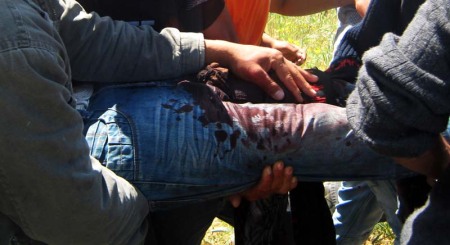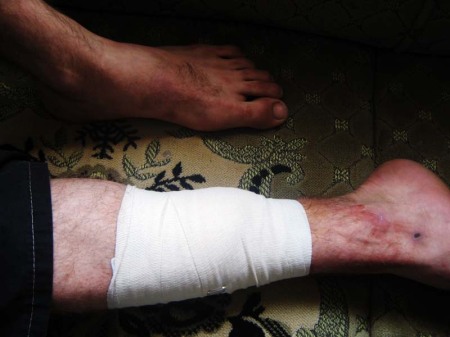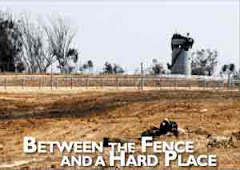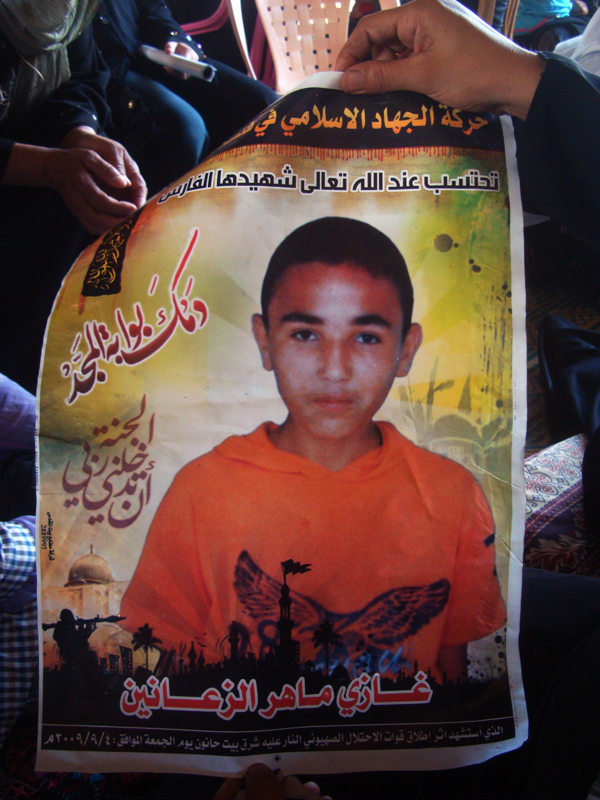March 30, 2010

Four non-violent demonstrators were shot at close range with live ammunition by Israeli soldiers during six simultaneous protests throughout the Gaza Strip commemorating “Land Day”.
Three of those injured come from Khoza’a, a village east of Khan Younis in Gaza’s south. The fourth, from Deir al Balah, was participating in a peaceful demonstration east of Meghazi, central Gaza.
The Khoza’a demonstration neared the border shortly after 12 noon. Israeli jeeps stopped along the Green Line border, their number increasing quickly. Israeli soldiers exited their jeeps and assumed sniper positions on a raised dirt mound and along the border fence.
Jemah Najjar, 22, was the first to fasten a Palestinian flag to the border fence in today’s demonstration. He was also the first injured in the Khoza’a region, roughly 10 minutes after he had placed the flag on the fence, he estimates.
Israeli soldiers repeatedly opened fire on the very visibly unarmed demonstrators, without any verbal warning, nor without warning shots in the air.
Pieces of the IOF bullet which struck Jemah Najjar are still lodged in his head. He will require an operation to remove them, if it is possible.



Walla’a Najjar, 18, was shot just above the kneecap by an IOF soldier at close range.
“I saw the soldier who shot me. He didn’t give any warning, just shot me right away.”
Walla’a Najjar is fortunate that the bullet did not hit an artery, although as it was he was bleeding heavily. Doctors say his leg has been fractured by the bullet. Palestinian medics confirm that in their experience Israeli soldiers routinely aim for the upper thigh area where an artery lies. If not treated quickly, victims can bleed to death from an artery injury.

Hani Najjar, 17, also has bullet shrapnel in his body. “The Israeli soldier was lying on a dirt mound across from us. He fired at me without warning.”
The bullet, fired from a distance of roughly less than 50 metres, hit below Hani Najjar’s knee. He will need an operation to remove the multiple pieces of shrapnel deeply embedded in his flesh. He had planned on attending the demonstration and continuing on to his nearby high school.
Fellow protestors carried the injured roughly half a kilometer to a place which ambulances could access. The border region is notoriously dangerous for all, including medics who under international law should have unheeded access to the injured. But through experience, medics in Gaza know they cannot reach victims in the border regions.

Mohammed Ot’ti, 21, from Deir al Balah, was in a demonstration further north along the border, east of Meghazi camp, central Gaza.
Ot’ti was the first to place a flag on the fence in his demonstration and was shot immediately after by an Israeli soldier, at close range.
“Last time they shouted at us and mostly fired in the air,” Ot’ti said, referring to last week’s demo in Waddi Salqqa. “This time, they didn’t say anything or give any warning. They just shot me.”
Like the others, Ot’ti says when he is healed, he’ll resume going to the demonstrations.


Mahmoud Az Zaq, co-coordinator of the Committee Against the Buffer Zone, said: “The Israelis should have fired warning shots, but instead they just shot directly at the youths”
Ma’an news reports that an Israeli military spokesman said an investigation showed “soldiers operated in accordance with accepted dispersal procedures,” in regards to the IOF violence against unarmed protestors.
To commemorate Land day, the Committee Against the Buffer Zone and the Local Initiative from Beit Hanoun organized 6 protests, in Rafah, Khoza’a, Meghazi, Karni, Beit Hanoun and Beit Lahiya.
Land Day remembers the murder of six Palestinians 34 years ago who were themselves protesting the Israeli annexation of Palestinian land.
Today’s protests are the latest in demonstrations growing in frequency and numbers, protesting the Israeli-imposed “buffer zone” and calling for the rights of Palestinians to work and live on their land, without threat of being shot or abducted by Israeli soldiers.
In May 2009, Israeli planes leafleted “buffer zone” areas re-iterating the Israeli imposition of a 300 metre off-limits area, within which anyone is subject to Israeli fire. In reality, Israeli soldiers shoot up to 2 km on farmers and civilians on their land, including children and women.
In Land Day commemorations yesterday and today, Palestinians throughout occupied Palestine tended olive and fruit trees, dressed in traditional Palestinian clothing, danced Dabke and showed the Palestinian spirit which until now has not been quashed by Israeli brutality.



